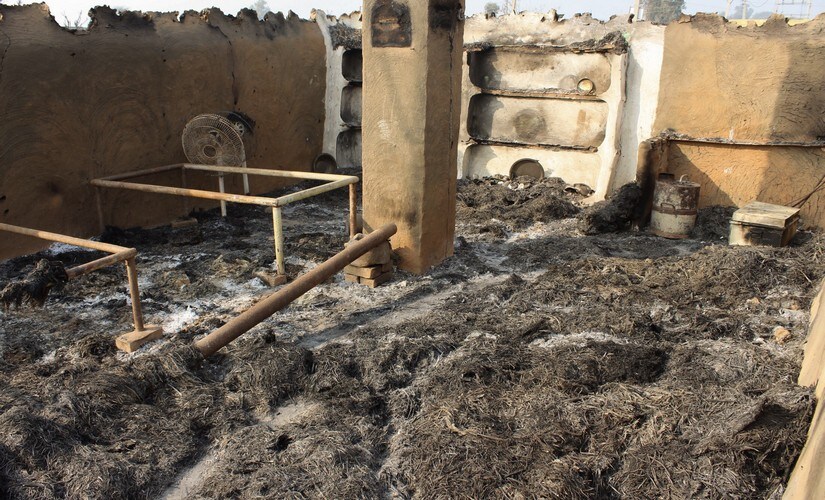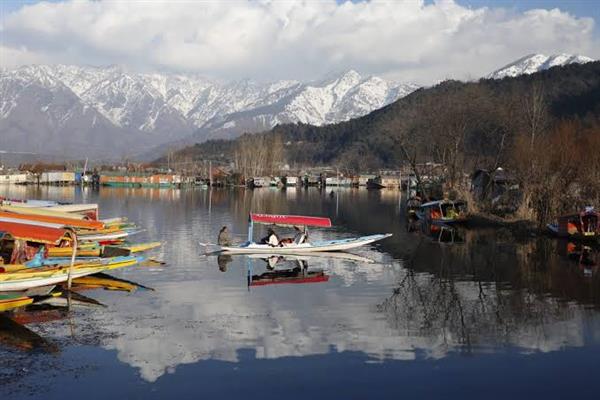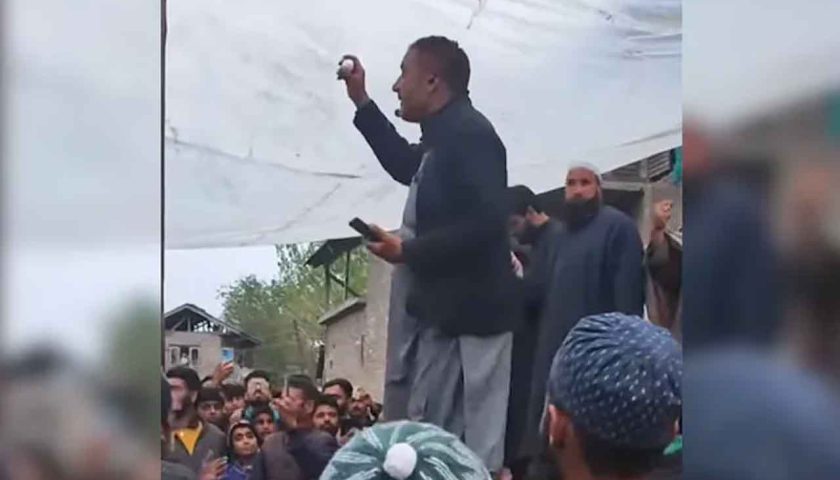Fozia Bi ran frantically between what would have been a cluster of houses in the Jora Farm village, searching for her lost goat. The sudden escalation at the border last week forced the family to abandon their house and their livestock.
The guns are comparably silent as she forces her husband to join the search.
The road leading to the village is deserted. Only the clip-clop of horseshoes ringing against the road breaks the eerie silence. Few kilometers ahead, a group of village children are celebrating the Republic Day. One takes a picture wrapped in a tricolour while others try to unfurl another flag on a treetop. Passing by the group is Haji Saifullah, on a horse cart, along with his daughter, and wife Fozia Bi, slowly driving back to their village for the first time since guns started roaring along the International Border in Jammu.
The destruction in Jora Farm is visible from afar. The silhouettes of woven-grass roofs reduced to ashes by the shelling give the small village a look of a collection of grey mounds of earth. As they saw their home, the Hajis jumped out and began a collective dirge. “This was our home,” Saifullah, 68, said pointing to a mound with tears in his eyes.
Saifullah searched for a trunk within the rubble in which he had kept some important documents. He keeps looking frantically from one corner to another, turning over and over the piles of ash. “All that we earned and cared for has now been turned into ashes,” he told Kashmir Post.
Although mortar shelling of villages by Pakistani troops has subsided, the exchange of gunshots continues.
But even when guns go silent, it doesn’t necessarily mean peace has arrived along the nearly 200 kilometers of border, and 770 kilometers of Line of Control that divides Kashmir.
“It is a state of mind when you eat the evening meal with your children at home knowing that a shell may anytime land on you and all of us will be dead. That is what peace means for us,” says Saifullah. There has been no real peace for the family, particularly after the war of 1962.
“We must be the only people in the world who hope and pray that the house they build in the morning is not brought drought down by a shell in the evening. That is the story of our lives. We have a home without a home,” he says.
Jora Farm is located less than 500 metres from the working international border with a population of at least 250 Muslim Gujjar families, sandwiched between the armies of India and Pakistan, the village lives on the edge and at the mercy of the soldiers. The situation is same in hundreds of villages along the International Border and the Line of Control whose inhabitants’ peace of mind and their savings get turned into ashes with a single shot fired from either Indian or Pakistani side.
The village falls within the range of small arms firing by Pakistani rangers. In bad times, authorities often evacuate residents to bulletproof bunkers, while a majority of them crawl out and abandon their homes. A whitewashed wall of a residential house, pockmarked with bullet holes, at the entrance of the village is a testimony of how tension unfolds in the village when soldiers of the two countries pound each other’s locations. The walls of the houses face the Indian posts on one side and Pakistani posts on the other.

Curiously, the side of the wall facing the Pakistani location is less damaged than the wall which faces the Indian posts. “When they (forces from the Indian side) fire, it is not guaranteed that the bullets and shells will land in Pakistan. They may land in adjoining homes too,” Saifullah explains.
A ceasefire between India and Pakistan in late November 2003 provided a much-needed relief to the residents living along the LoC and International Border. On 26 November, 2003, both nations had agreed to the ceasefire, coinciding with Eid festival. This was the first formal truce between the two armies since the start of militancy. Guns along LoC, International Border and in Siachen Glacier fell silent on the very next day.
But the border areas have witnessed a massive escalation in the last few years. In 2014, according to the home ministry, there were 430 ceasefire violations along the International Border under the operational control of BSF, in 2017, there were 771 violations till 10 December along the LoC which is under operational control of the Indian Army, and 110 along the International Border.
The firing, which generally takes place during the night or in the wee hours, leaves a trail of death and destruction. Residents leave their homes and return to ruins. Their farms are destroyed and livestock has perished. And most of them have to start rebuilding their lives from scratch, only to see everything destroyed once again when a new incident of firing happens.
On Friday, the BSF refused to exchange sweets and greetings with their Pakistani counterparts on the occasion of Republic Day. As Haji Saifullah searched the ruins of his home, he couldn’t find anything retrievable. All that was left were some half-burnt utensils and charred bedding. The entire neighborhood was reduced to ashes and smoke was still billowing out of few mounds of ash.
Behind the house, as Saifullah joined his wife in the search, their goat lay charred under the rubble of mud and a half-burnt window frame. Fozia Bi is visibly shocked by the discovery and she instantly breaks down. “She was our only source of income,” Fozia told Kashmir Post. “I used to run my house by selling her milk. What will we do now?” she asks.






